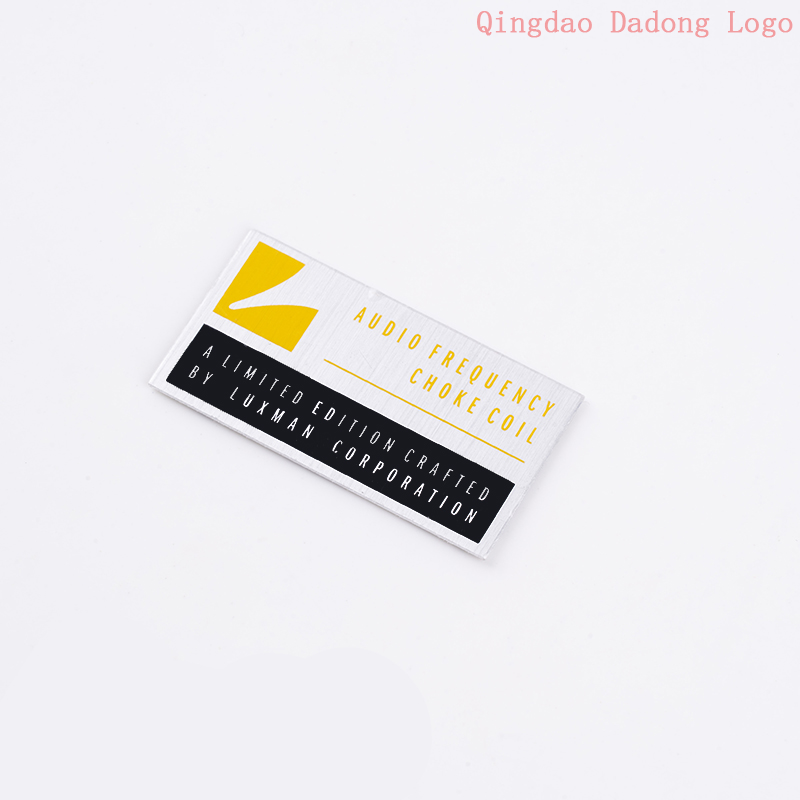NEWS
Advantages and disadvantages of vacuum electroplating coloring for plastic nameplates
Writer:admin Time:2023-06-15 11:00 Browse:℃
Electroplating coloring is a commonly used surface treatment process for the production of plastic nameplates. Common electroplating methods include water electroplating and vacuum ion plating. At the same time, vacuum electroplating is more environmentally friendly and can produce glossiness effects that ordinary electroplating cannot achieve. Vacuum electroplating, also known as vacuum coating, can be used for plastic raw materials such as ABS, ABS+PC, PC, PE, PP, PVC, PA, PMMA, etc. However, there are few types of metals that can be operated on. The vacuum coating process is only limited to metals with lower melting points than tungsten wire, such as copper and aluminum metal nameplates, gold, silver and other plated accessories. Next, let's talk about the advantages and disadvantages of vacuum electroplating coloring for plastic nameplates:
There are several types of vacuum electroplating, including vacuum evaporation, sputtering, and ion plating. Vacuum evaporation is a method of heating metal under high temperature and vacuum conditions to melt, evaporate, and cool it to form a metal film on the surface of a plastic nameplate. All methods use distillation or sputtering under vacuum conditions to deposit various metal and non-metallic films on the surface of plastic parts. By electroplating treatment, a very thin surface coating can be obtained, while possessing the outstanding advantages of fast speed and good adhesion. Vacuum electroplating coloring is currently a popular surface coating treatment process, with strong metal sensitivity and high glossiness. Compared to other coating methods, it has lower cost and less environmental pollution.

Advantages and disadvantages of vacuum electroplating on plastic nameplates:
1. After coloring the metal coating, another layer of UV oil needs to be sprayed. Without spraying UV oil, the adhesion is poor and cannot pass the 100 grid test.
2. Variety of colors: It can solve the problem of seven colors, such as glitter silver, magic blue, cracks, water drop silver, and other diverse seven colors.
3. Vacuum electroplating uses a wide range of coating materials, which are more in line with environmental requirements.
4. Wide range of deposition materials: Low potential metals such as aluminum, titanium, and zirconium that cannot be deposited by wet electroplating can be deposited. By using reaction gases and alloy targets, coatings from alloys to ceramics and even diamonds can be deposited, and coating systems can be designed according to needs.
5. Saving metal materials: Due to the excellent adhesion, density, hardness, and corrosion resistance of vacuum coatings, the deposited coating can be much smaller than the conventional wet electroplating coating, achieving the goal of saving.
6. No environmental pollution: As all coating materials are deposited on the surface of the workpiece through plasma in a vacuum environment, there is no solution pollution, so the harm to the environment is relatively small.
7. Vacuum electroplating plastic nameplates have strong metal sensitivity and good glossiness, and are relatively low-cost compared to other coating methods.
8. The volume of the steam plating pot bottle is small, the output of electroplating parts is small, and the production efficiency is low.
The process quality requirements for vacuum coating are relatively high, and before electroplating, it is necessary to apply base oil to make up for some shortcomings on the surface of the workpiece.
10. Vacuum electroplating has good wear resistance and can pass various friction tests. Generally, electroplating nameplates have poorer wear resistance.
CATEGORIES
LATEST NEWS
CONTACT US
WhatsApp: +8615806503075
Tel: +8615806503075
Email: percy@dadonglogo.com
Addr: 7 Tonghe Road, Pingdu, Qingdao
